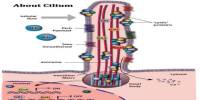Exons are little segments of genetic code that are only included when cells copy DNA to create RNA transcripts. A fully developed RNA molecule that can be utilized as a template to create proteins is the end result.
One of the characteristics of gene expression is that a cell can choose various exon combinations to produce various RNA transcripts through a procedure called alternative splicing. Similar to how filmmakers generate a standard and director’s cut of a movie, the inclusion or exclusion of a single exon can lead to the creation of proteins with various functions.
Living organisms use alternative splicing to enable complex functions. The same gene results in different RNA transcripts being produced by various cell types in various tissues. Understanding this mechanism opens the door to new diagnostic and therapeutic targets as well as new information about human development, health, and disease.
In recent years, researchers have discovered microexons, a type of protein-coding DNA sequence. Microexons are considerably shorter than ordinary exons, which typically range in length from three to 27 nucleotides. Microexons have been preserved by natural selection for hundreds of millions of years in a variety of animals, from flies to mammals, suggesting they serve a significant purpose.
In humans, most microexons are exclusively found in neuronal cells, where the tiny gene fragments exert a mighty role. For example, recent studies show that they are crucial for the development of photoreceptors, a specialized type of neuron in the retina.
Microexon activity changes have also been found to be frequent in autistic brains, which suggests that the tiny gene fragments have a significant impact on the clinical features of the disorder.
“A microexon is a short fragment of DNA that codes for a few amino acids, the building blocks of proteins. Though we don’t know the exact mechanisms of action involved, including or excluding just a handful of these amino acids during splicing sculpts the surfaces of proteins in a highly precise manner. Therefore, microexon splicing can be seen as a way to perform microsurgery of proteins in the nervous system, modifying how they interact with other molecules in the highly-specialized synapses of neurons,” explains ICREA Research Professor Dr. Manuel Irimia, a researcher at the Centre for Genomic Regulation (CRG) who explores the functional role of microexons.
Consequently, we expect mutations in microexons to lead to diseases whose genetic causes we have not yet understood. We are beginning to search for these mutations in patients with neurodevelopmental and metabolic disorders as well as retinopathies, to then devise possible interventions to treat them.
Professor Dr. Manuel Irimia
A research team led by Dr. Irimia and ICREA Research Professor Juan Valcárcel at the CRG has now discovered that microexons are also found in another type of cell that carries out highly-specialised functions within complex tissues and organs endocrine cells in the pancreas. Microexon splicing is prevalent in pancreatic islets, tissues that host beta cells which make the hormone insulin. The findings are published today in the journal Nature Metabolism.
While researching the function of alternative splicing in the biology of pancreatic islets and control of blood sugar levels, the researchers made the finding. They carefully looked for exons that are differentially spliced in pancreatic islets compared to other tissues when analyzing RNA sequencing data from various human and animal tissues.
The information showed that nearly all of the microexons, which were notably abundant in pancreatic islets, were also present in neural cells. The results support the hypothesis that pancreatic islet cells developed by stealing regulatory components from neurons.
The bulk of the more than one hundred pancreatic islet microexons discovered were found on genes important for insulin secretion or associated with a higher risk of type 2 diabetes. The research also revealed that microexon inclusion in RNA transcripts was controlled by SRRM3, a protein that binds to RNA molecules and is encoded by the SRRM3 gene.
The authors of the study showed that high blood sugar levels induced both the expression of SRRM3 and the inclusion of microexons, hinting at the possibility that the regulation of microexon splicing could play a role in maintaining blood sugar levels.
To further understand the impact of islet microexons, the researchers carried out various functional experiments using human beta cells grown in the laboratory, as well as in vivo and ex vivo experiments with mice lacking the SRRM3 gene.
They found that depleting SRRM3 or repressing single microexons lead to impaired insulin secretion in beta cells. In mice, alterations to microexon splicing changed the shape of pancreatic islets, ultimately impacting the release of insulin.
The researchers teamed up with Dr. Jorge Ferrer’s research group, also at the CRG, to study genetic and RNA transcript data from diabetic and non-diabetic individuals and explore possible links between microexons and human metabolic disorders. They discovered a connection between changes in type-2 diabetes risk and genetic polymorphisms that alter microexon inclusion and fasting blood sugar levels. Additionally, they discovered that the microexon content of the pancreatic islets of type-2 diabetes patients was decreased.
The study’s results open the door to investigating novel treatment approaches to treat diabetes by modifying splicing.
“Here we show that islet microexons play important roles in islet function and glucose homeostasis, potentially contributing to type-2 diabetes predisposition. For this reason, microexons may represent ideal therapeutic targets to treat dysfunctional beta cells in type-2 diabetes,” explains Dr. Jonas Juan Mateu, first author of the study and postdoctoral researcher at the CRG.
“A wide range of splicing modulators are available to treat a variety of human diseases. When I first started studying splicing in pancreatic islets eight years ago, I wanted to find out whether existing splicing modulators could be repurposed for diabetes. I think we’re one step closer to that,” adds Dr. Juan Mateu.
Even while the research demonstrates that microexons are crucial new players in pancreatic islet biology, more research will be required to pinpoint exactly how they affect the tissue’s development.
Researchers also lack a mechanistic understanding of how each microexon impacts the function of a protein and influences important pathways in islet cells. Knowing this would clarify the precise physiological role that pancreatic islets play in diabetes and other metabolic illnesses.
The study adds to a growing body of evidence that microexons play crucial roles in human development, health and disease.
“Less than 10 years after we first reported on their existence, we are seeing how microexons are key elements that modify how proteins interact with each other in cells with functions that require a high degree of specialization, such as neurotransmitter or insulin release and light transduction,” explains Dr. Irimia.
“Consequently, we expect mutations in microexons to lead to diseases whose genetic causes we have not yet understood. We are beginning to search for these mutations in patients with neurodevelopmental and metabolic disorders as well as retinopathies, to then devise possible interventions to treat them,” he concludes.
A team led by ICREA Research Professors Manuel Irimia and Juan Valcárcel, Group Leaders in the Systems and Synthetic Biology made the findings and Genome Biology research programs at the Centre for Genomic Regulation. Collaborators include Dr. Jorge Ferrer, Coordinator of the Computational Biology and Health Genomics program at the CRG and Group Leader at CIBERDEM.
The findings were supported through a Health Research grant from the “La Caixa” Foundation, the European Research Council (ERC), the EU Marie Skłodowska-Curie European Postdoctoral Fellowships, and the European Foundation for the Study of Diabetes (EFSD) and Lilly European Diabetes Research Program.
















